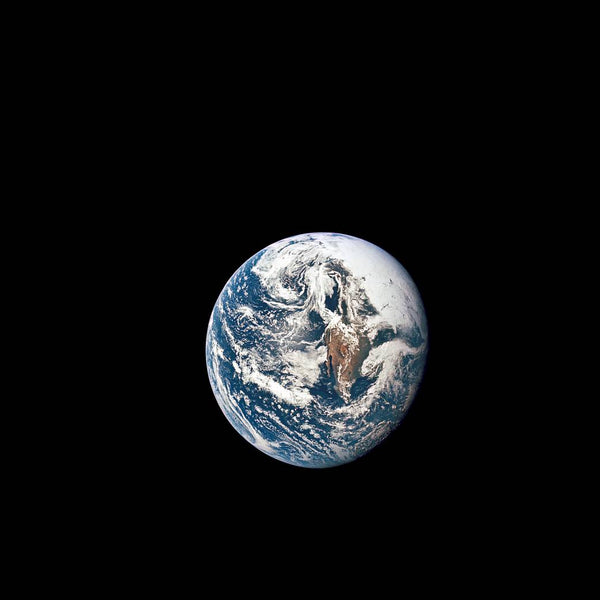Greenwashing: Green Is Always Good, Right?
Apr 12, 2023
Did you know that before 1970 there was no Environmental Protection Agency (EPA), no Clean Air Act, and no Clean Water Act? Nope, no regulation.
It's hard to put a date on the birth of the modern environmental movement. Perhaps it began with Rachel Carson's Silent Spring, written on the Coast of Maine not far from Peace House Studio. Perhaps the moon landing in 1969 and the now iconic photograph of our fragile earth as seen from the moon inspired environmentalists. But the first Earth Day took place on April 22,1970, fusing the energy of the student anti-war movement with a growing public consciousness about air and water pollution, and the fragility of our planet. By December 1970, the EPA was born.

Fast forward to today and we are still very much fighting for our planet and trying to make the right choices to keep the actual ball rolling/spinning through space.
Many of us are really trying to reduce, reuse, and recycle as much as possible. These 3 R’s are some serious buzzwords — much like “sustainable” or “zero waste” – and they are popping out at us today at every turn of a shopping cart.
Fortunately (or maybe, unfortunately) it’s pretty “trendy” to be eco-friendly.
So, of course, it is no surprise that the fashion industry (along with many other industries) has jumped on the bandwagon to appeal to a type of consumer that has some well-intentioned values when it comes to what they buy.
Have you ever bought anything that claimed to be “sustainable”, “natural”, or made of chemical-free, recycled materials? Same here. And it can feel good in the moment to put those things in your cart and feel like you’ve “done your part” right?
Well, while some of these claims are legit, some of them are not even close. And when it’s the latter it's what’s called: “greenwashing."
Greenwashing is defined as an attempt to capitalize on our desire to go with the herd and be as environmentally friendly as possible. Companies who greenwash modify color schemes and mislead on labeling and in advertisements, in an attempt to appear more environmentally sound so that you will buy their products.1
Greenwashing is happening all the time — from the soap you do your dishes with to the packaging that your food is wrapped in, and yep, you guessed it, greenwashing is happening with the clothes that you buy too.
In plain terms, there is some tricky business going on here. People are falling for (and purchasing) products that claim to be something they are not.
Take the shoe company Adidas, they ran an ad campaign selling the Stan Smith shoe with a tagline that read: “100% iconic. 50% recycled.” Turns out the “50% recycled” bit wasn’t true — at all. They used the color green and pictures of their shoe crushing plastic to insinuate that the product was recycled and “green”. And Adidas’ advertisement didn’t share (or intend to share) what proportions of the shoe were made of recycled materials2.
shoe with a tagline that read: “100% iconic. 50% recycled.” Turns out the “50% recycled” bit wasn’t true — at all. They used the color green and pictures of their shoe crushing plastic to insinuate that the product was recycled and “green”. And Adidas’ advertisement didn’t share (or intend to share) what proportions of the shoe were made of recycled materials2.
And that’s greenwashing.
If you’d like to deep dive into the Stan Smith issue then check out this very detailed breakdown of the case provided by the Advertising Ethics Jury in France. The document breaks down how well-placed pics, colors, and logos are used to influence consumers who are trying to be more eco-friendly, to buy products that are anything but.
Advertising uses all kinds of tricks and as the Adidas ad demonstrates, the use of percentages is one eye-catching way to try and convince us that products with these claims are legit and above board. We wish!
So how can you avoid the greenwashing trap? Here are some ideas:
Start by questioning the claim.
If a company is greenwashing then it will not have any evidence to support the claim they are making.
One of the easiest ways to follow up on your hunch is to check the ingredients. If an item says it’s made from 100% organic materials then it will almost always show the label of the vetting organization that verified that. If it doesn’t, something might be amiss.
Do your own research.
Go to the company’s website and jump into the rabbit hole! Are there any articles or an FAQ section that can point you back to some fact-based information? If not, there’s a good chance the company is not walking the walk.
Recognize that 100% environmentally friendly is probably just hype.
Industrialized product creation on a mass scale (especially clothing) is nearly impossible to make environmentally friendly. Why? Because as consumers most of us want “more”, “faster”, and “now”, so companies just ignore environmental safety, workplace safety, and marketing integrity to meet that end and get more of our business.
This is why staying small and local, and reusing (or better still, questioning your need to buy more) can go a long way to minimize your impact on the planet.
So, have we made you wonder about Peace House Studio? Good! Cuz being a conscientious consumer means you are well on your way to keeping greenwashing at bay!
And, to give you some insight into how we do things at Peace House Studio — we are always trying to live our mission:
Create quality children's clothing, extend their functional lives, and establish a culture of reuse.
Everything we produce is handmade by us in our home studio. Now that's local and small-scale!
We also encourage you to extend the functional life of your clothes and take part in a culture of reuse by mending and donating pre-loved Peace House Studio clothing too! Check out our last blog post here for some tips and tricks on how we do that with Peace House Studio clothing and the Patches Project!
Unfortunately, there is no 100% eco-safe textile. Of course, we want to be as close to that as possible, currently, we source our fabric from Birch Fabrics in California. Check out what Birch has to say about their organic cotton fabrics, low-impact dyes, and how they certify it all here. We will soon be sourcing domestically, which will reduce our carbon footprint and have no unanswered questions about the social and environmental impacts our our products.
We’ll continue to do our own research and stay diligent when choosing materials and designing our processes so that we can stay true to our mission and make products that you can be proud to buy — for your family and for the sake of the environment.
So what's been the biggest greenwashing scam you’ve been a victim of? Comment below and share your thoughts!
Till next time!

Peace House kids on Southport Island near Rachel Carson's summer cottage.
Endnotes



